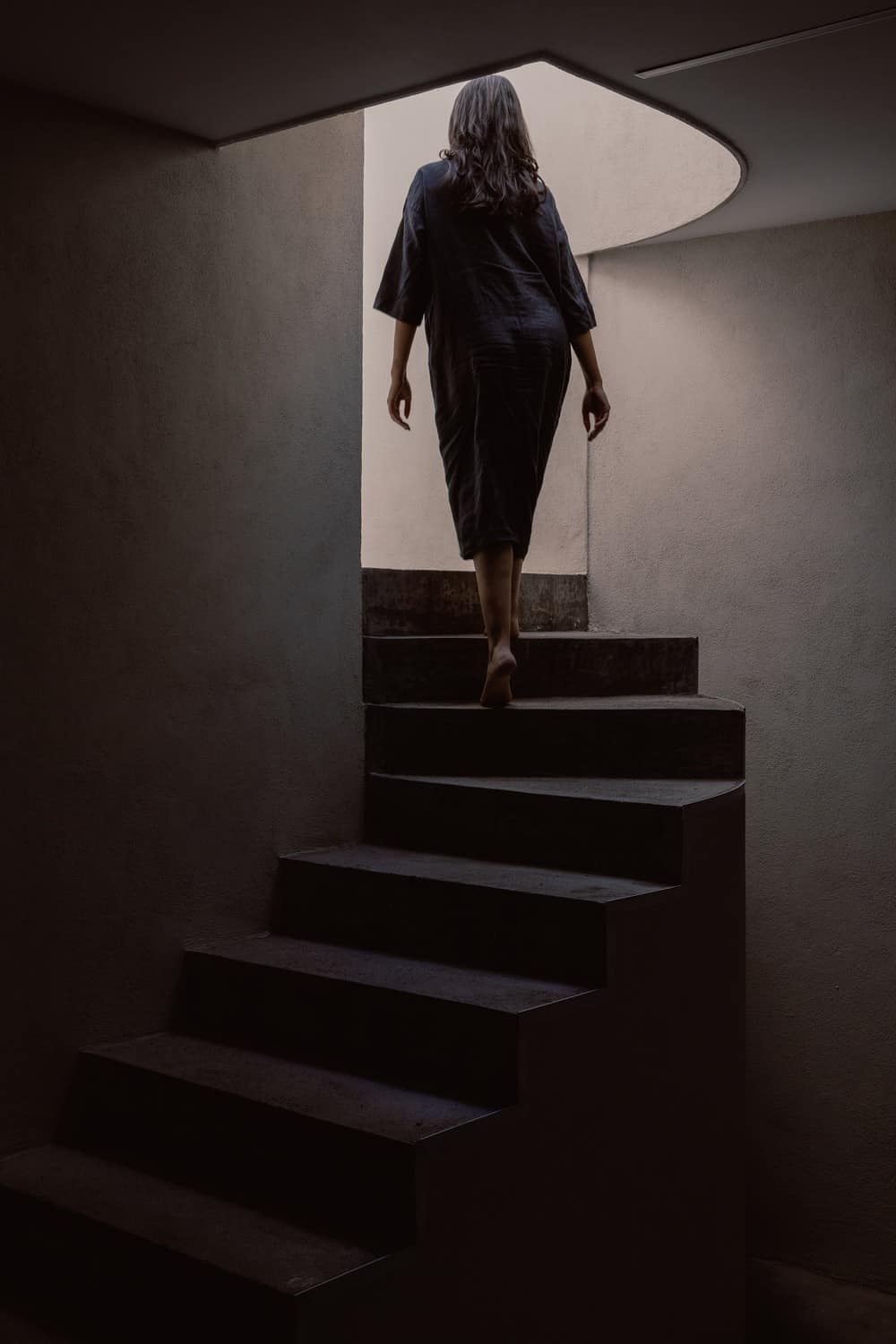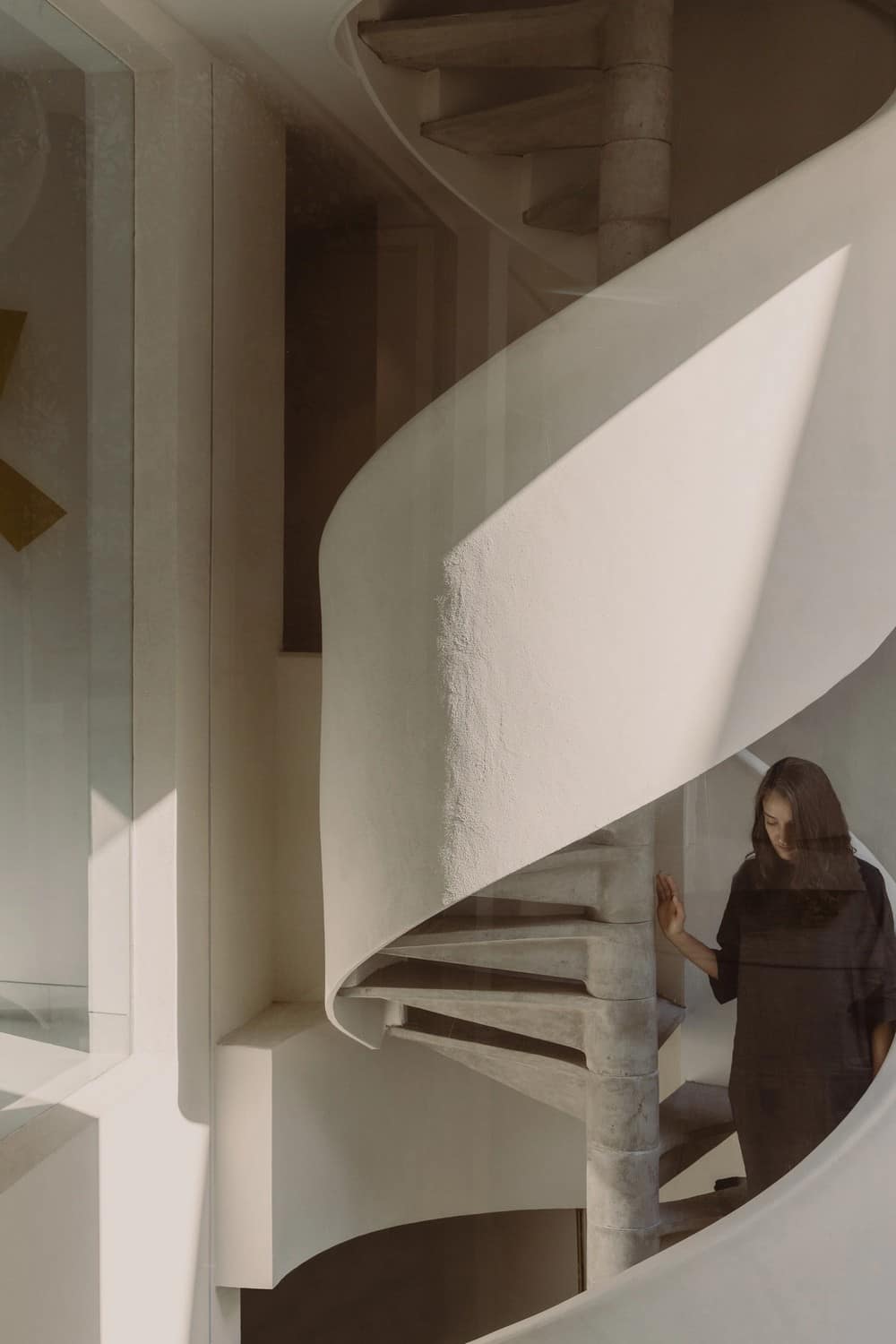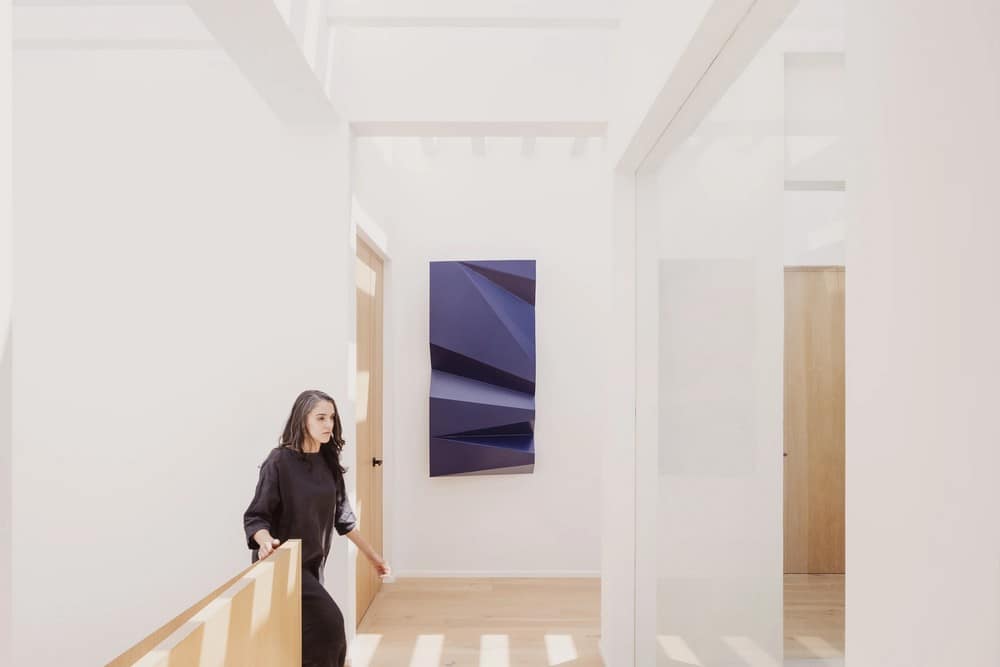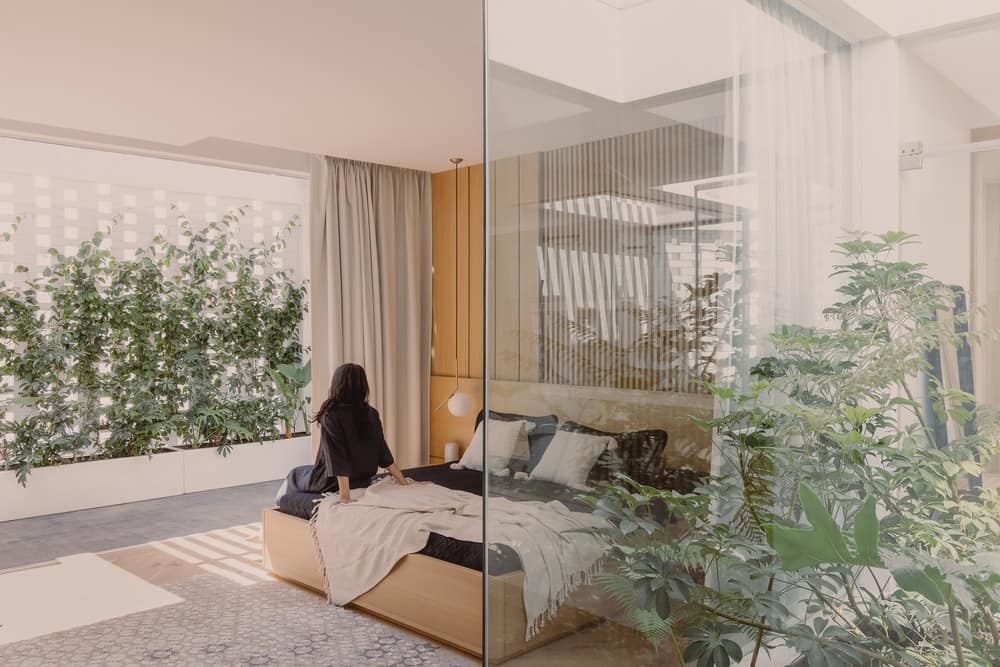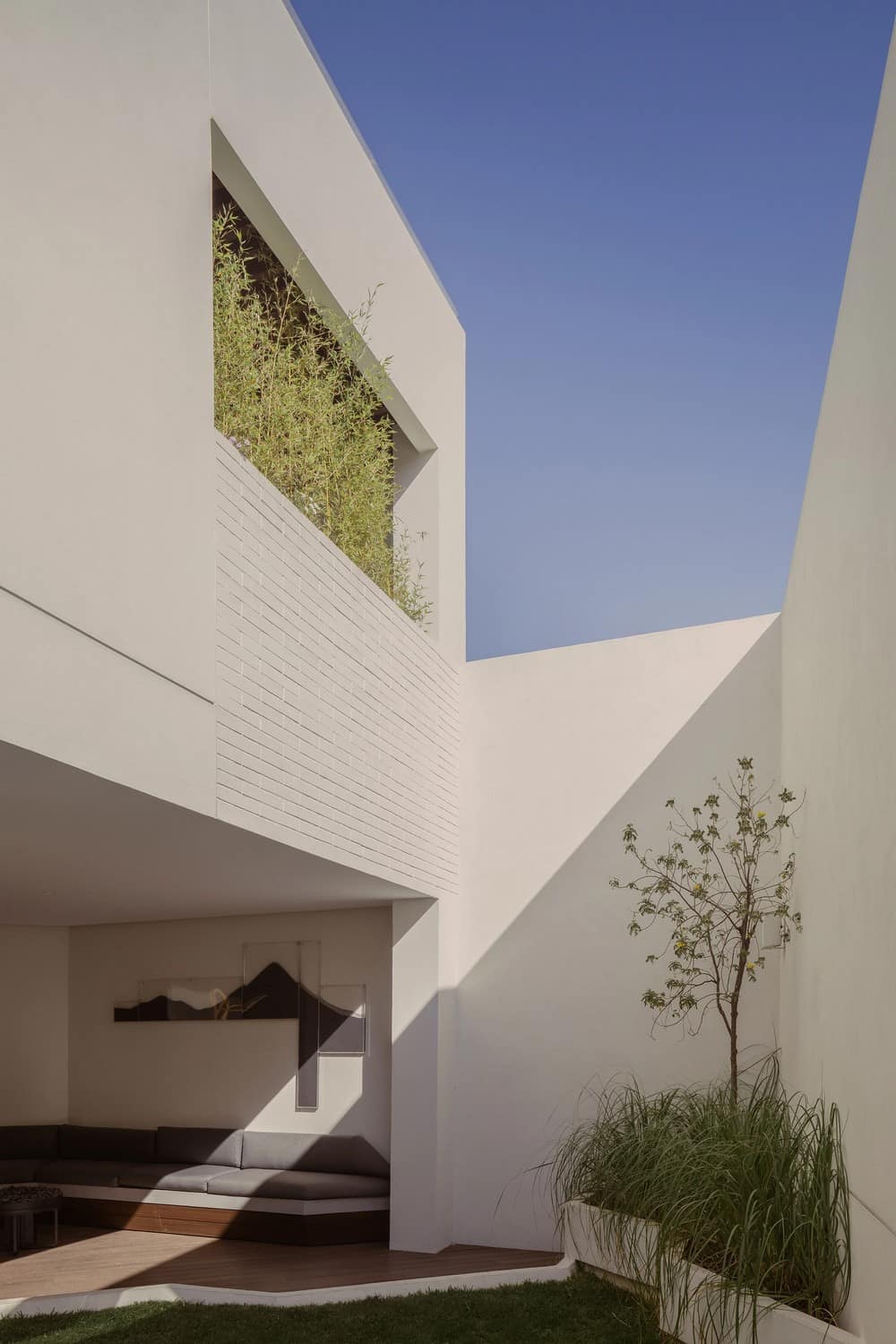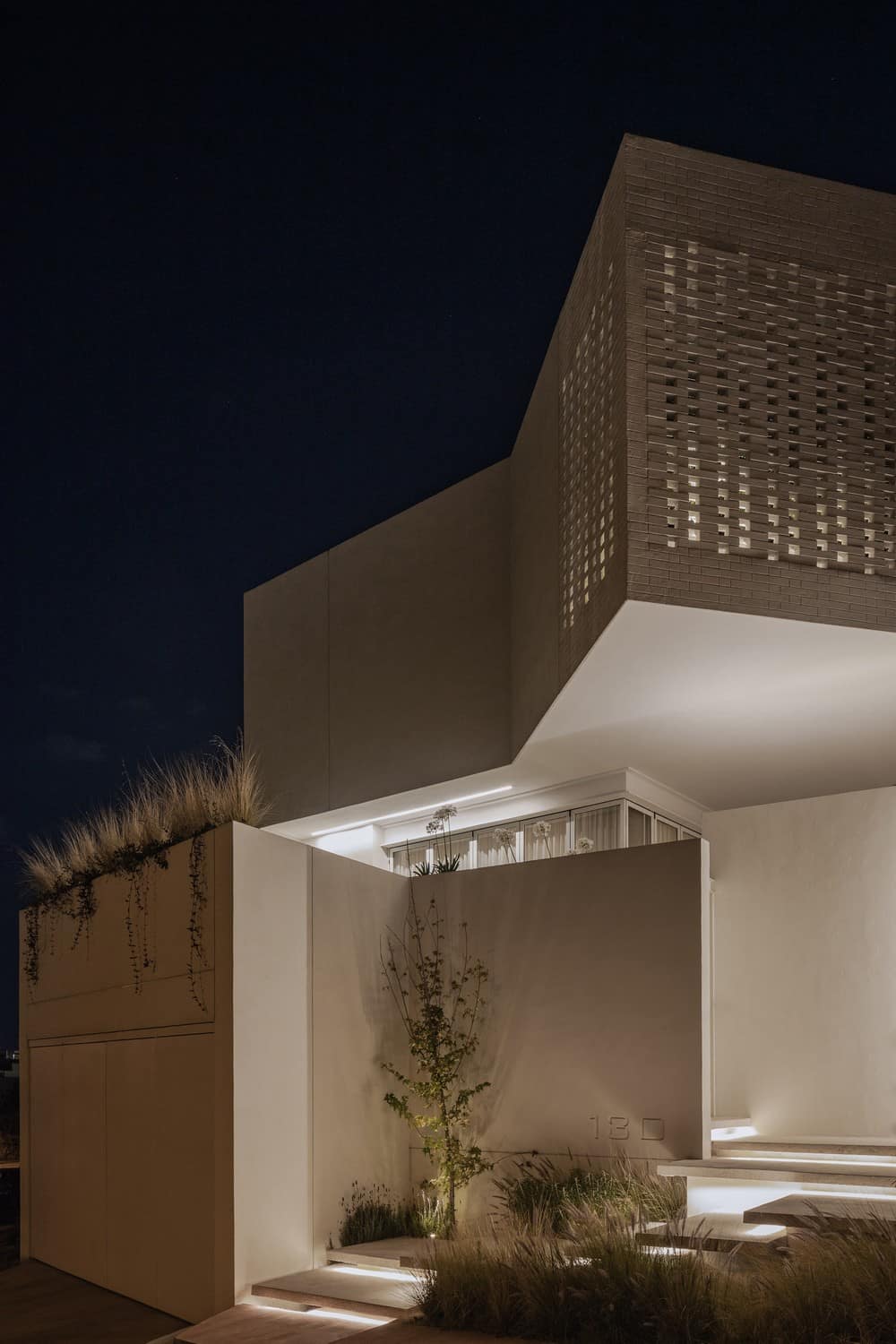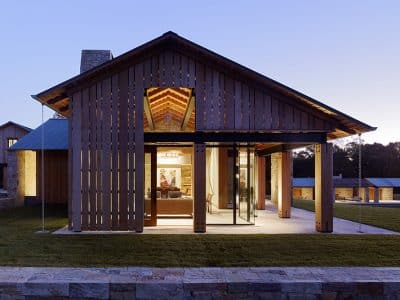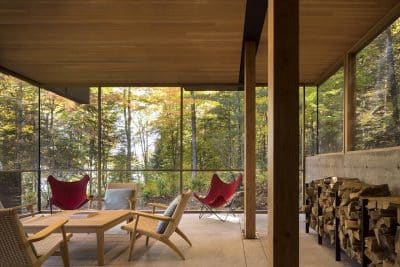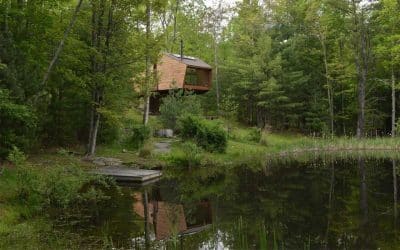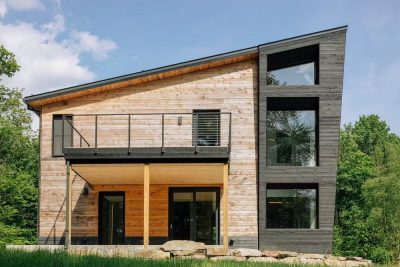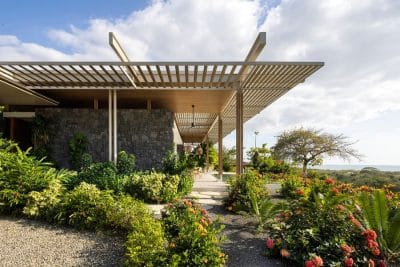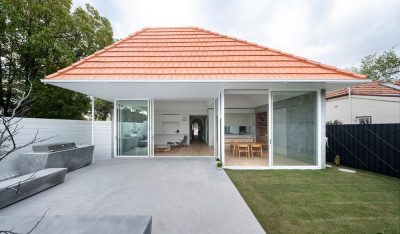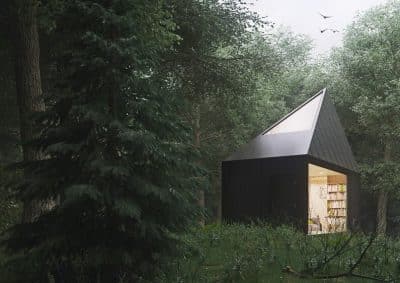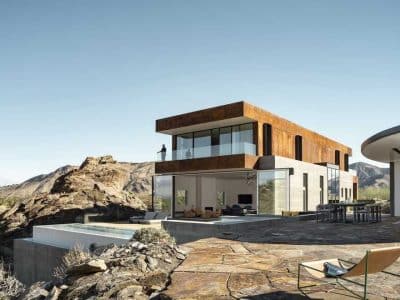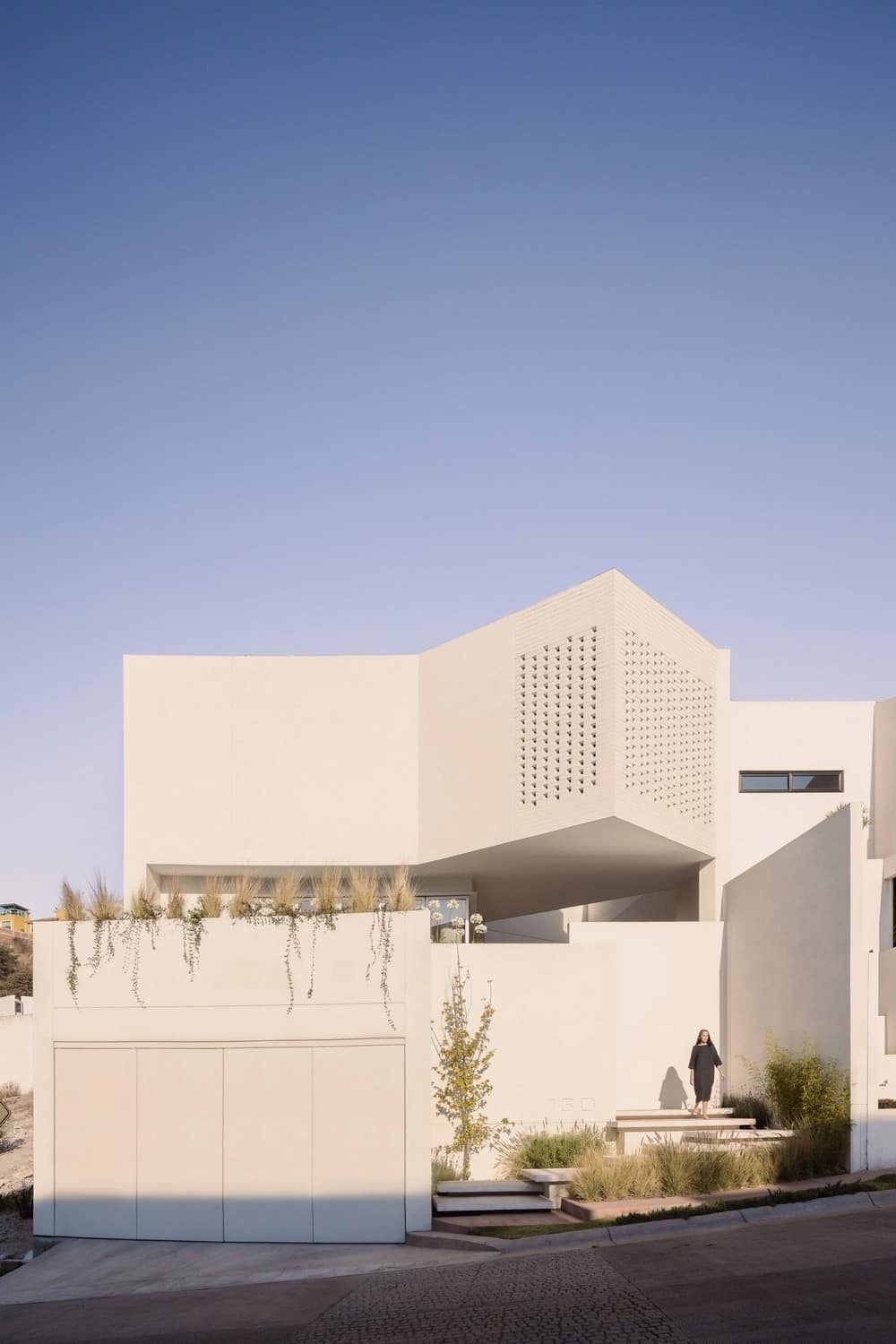
Project: Sexta House
Architecture: All Arquitectura
Interior Design: All Arquitectura + Armónico
Landscape Project: FUNDAMENTAL
Structural Project: Project & Calc
Execution & Construction management: WRA Group
Location: Lomas Verdes, Mexico
Year: 2021
Photo Credits: Zaickz Moz
Located within a residential complex, the name of this house comes from its location within the Sixth Section of Lomas Verdes, in the State of Mexico. The silhouette of the hills surrounding the landscape is composed of a collage of typologies, functions and forms that brings life to this context, which we seek to understand in order to make the most of its potential and conditioning factors.
The project arises from this analysis, integrating the natural climate conditions in the area to achieve maximum comfort in a sustainable way. At the same time, it stands out among the historically built for its design and architectural quality.
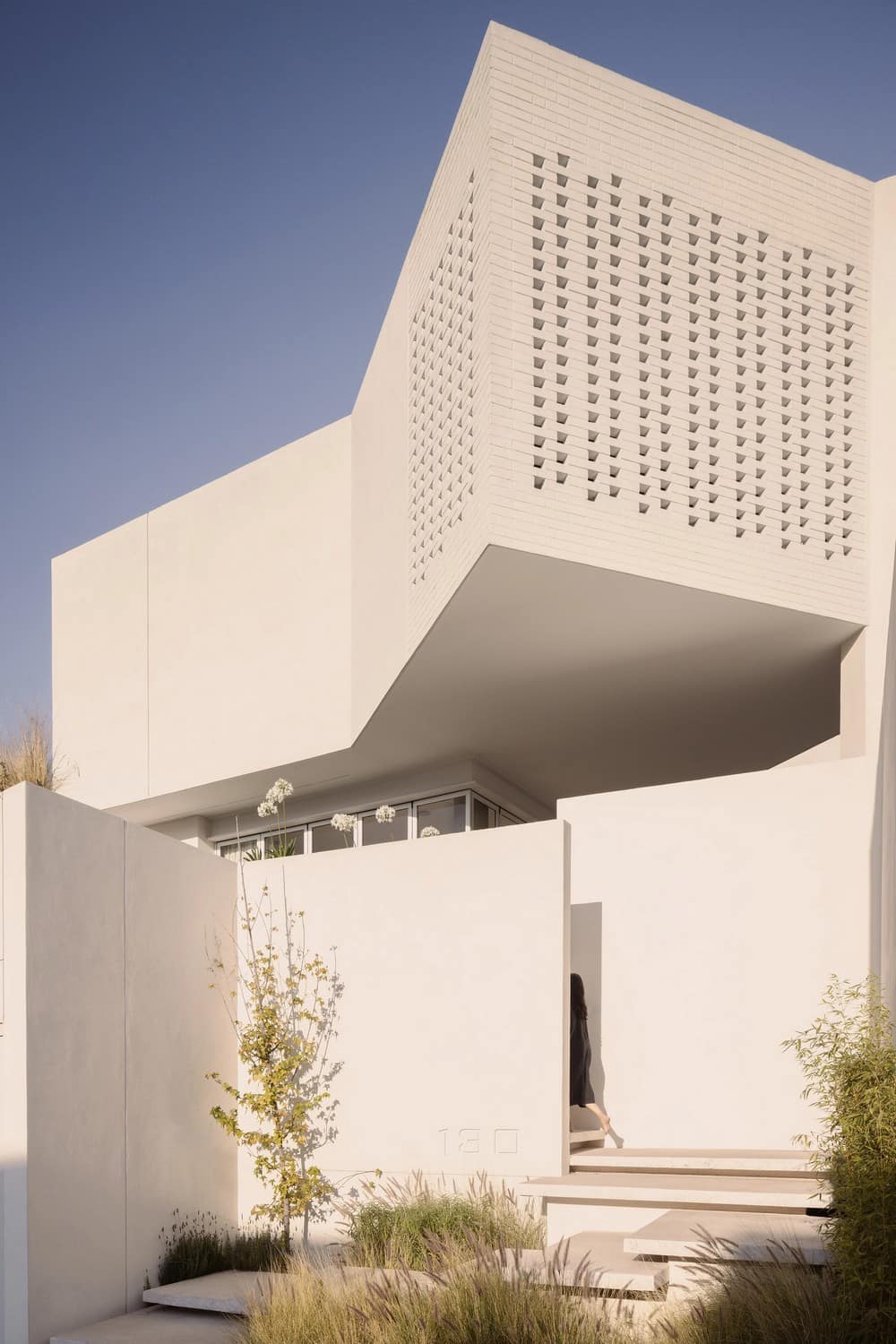
Having a property located within a closed housing complex dictates its relationship with the neighboring houses and opens the possibility of focusing the design on what happens inside of it, allowing to emphasize the link with the inhabitants -a family of four people: father, mother and two teenagers- and their activities. Therefore, the geometry of Sexta House turns inward, giving privacy to its spaces while seeking as much natural light as possible.
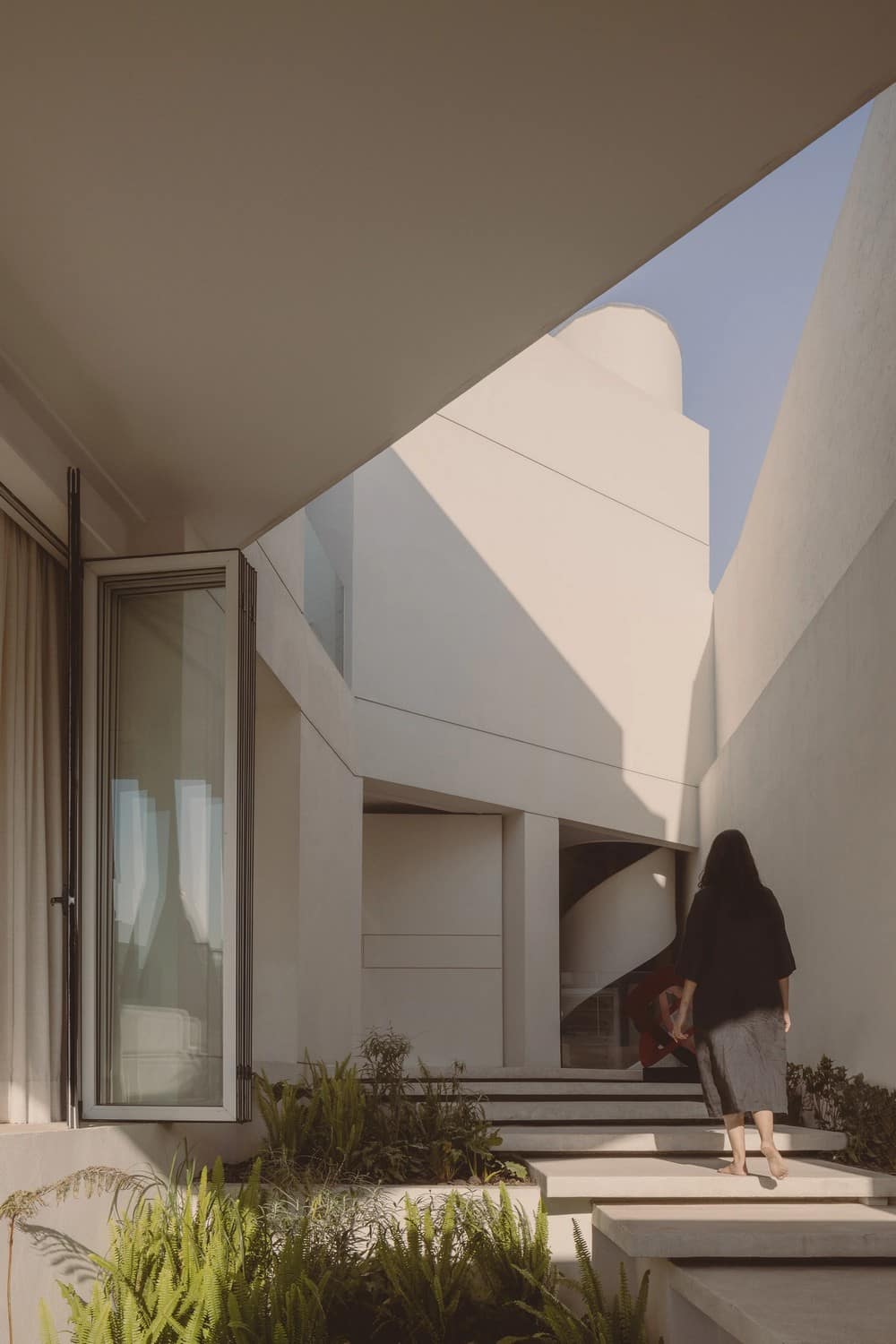
The massiveness present in the frank volumetry composition rises a play of shadows created by the juxtaposition between the same volumes and voids of the project. The light bouncing off the white stucco gives us ephemeral landscapes throughout the day, an evolution of the spaces through the hours.
The structure, in addition to providing solidity and a forceful architectural language, hierarchizes the spaces; for example, the only circular column of the project supports a large overhang that serves as an access deck while housing the main room.
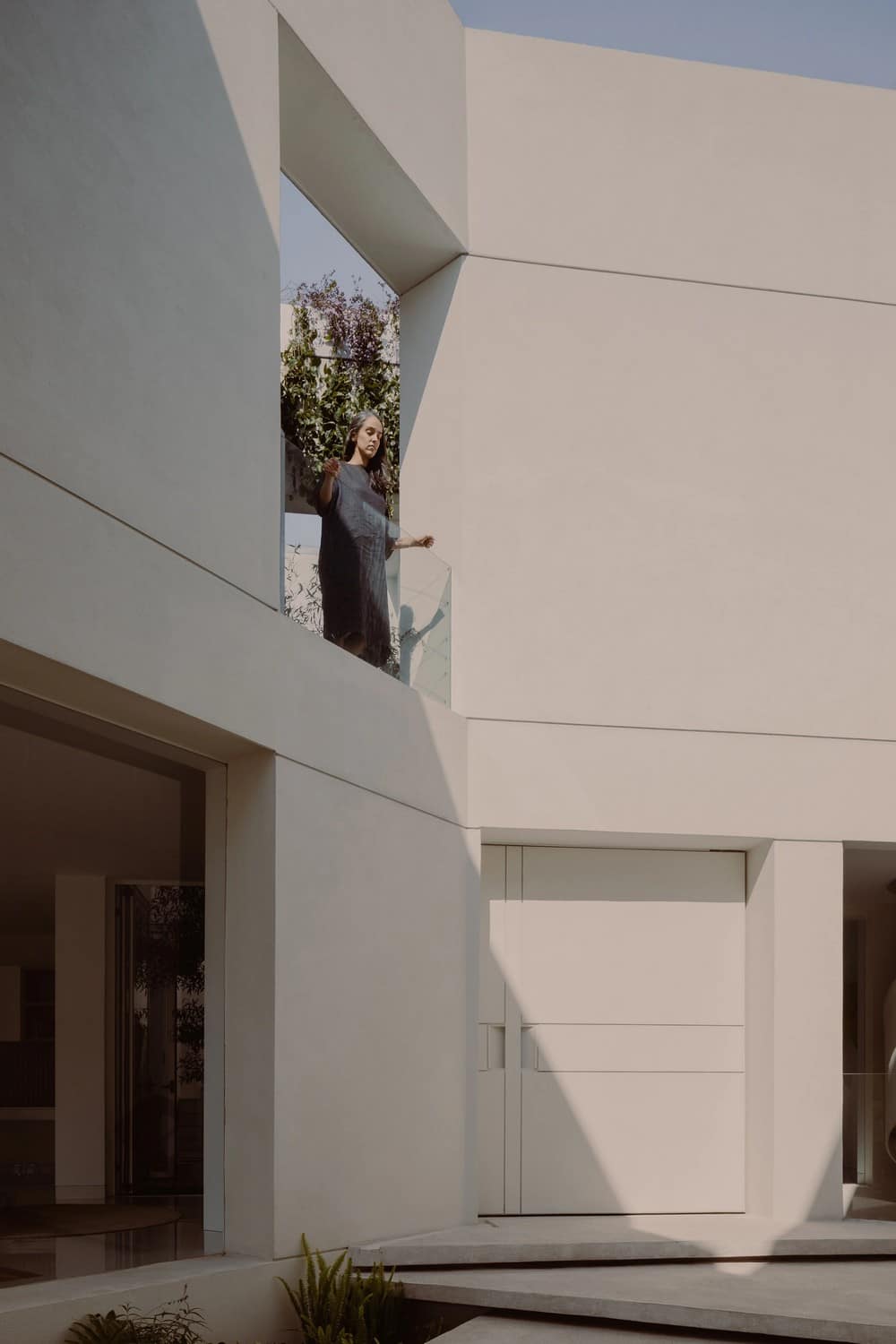
The design of the Sexta House is based on the configuration of the narrow space of the land, which had three different slopes with up to 10m of difference, which led us to play with the levels to maximize the 350m2 of available area. The architectural program is developed on three floors arranged at 45º to take advantage of the sunlight through ten patios spread over the three levels.
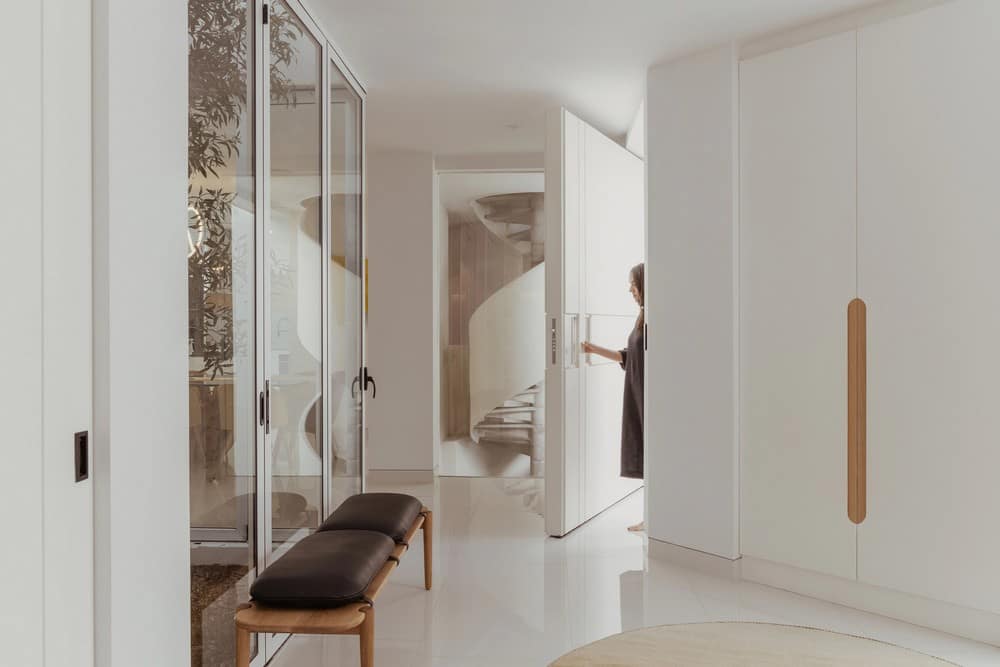
Each level responds to a different atmosphere according to its use; the access floor, which corresponds to the intermediate level, houses the public areas (living room, dining room and front garden) and the semi-public areas (kitchen, back garden and study). A black acacia tree serves as the heart of the project, as well as the link between these spaces and the upper floor. The main circulations become radial, as they revolve around the lobby created by the central tree.
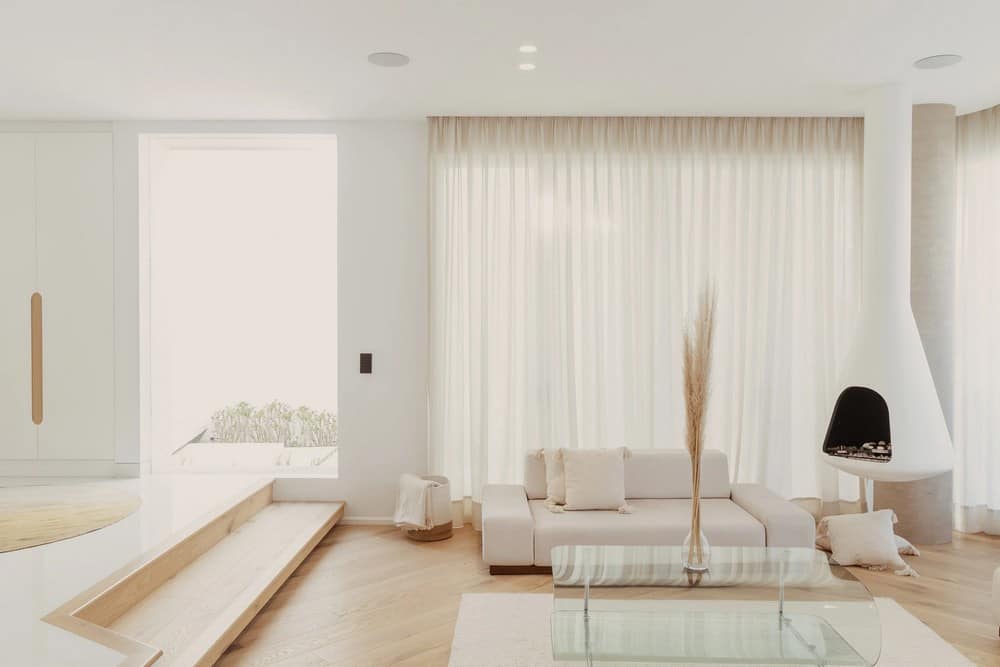
The first level shelters the private areas of the house. All bedrooms – three for the family on the first level, one for guests and one for service on the basement level – open onto an independent patio that naturally ventilates and illuminates each one. The master bedroom has its own bathroom, dressing room, sauna and small breakfast area.
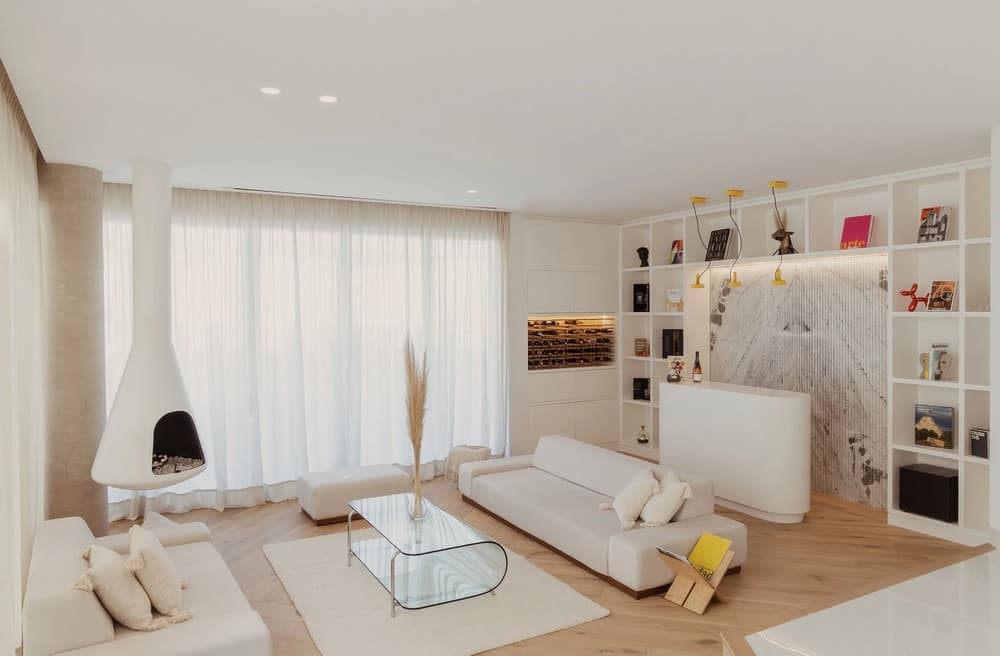
In addition to the previously mentioned circulations, a service staircase that acquires a sculptural character links the three levels. The basement floor, in addition to the aforementioned rooms, contains a gymnasium, a video game room, the garage and a party room. The distribution of the recreational spaces allows them to be used without interfering with the activities of the rest of the family, which provides total independence.
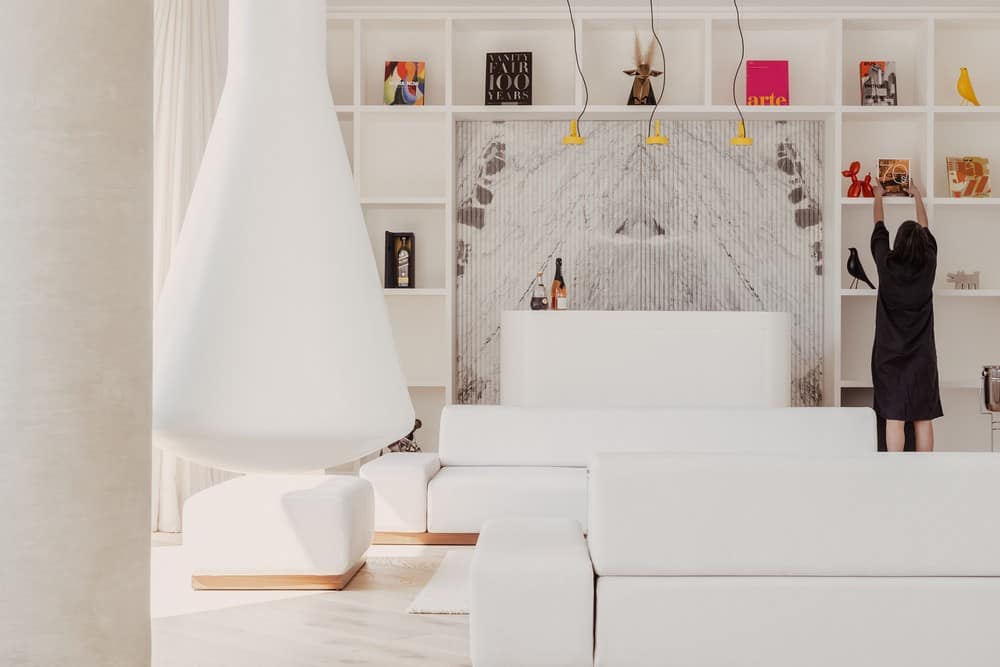
The landscape is an essential part of the project; in each space there is a vegetated top. From the entrance, an imposing massif is accompanied by platforms invaded by vegetation and continues the route to the interior. The plant palette integrated into all the spaces was designed to grow along with the project.
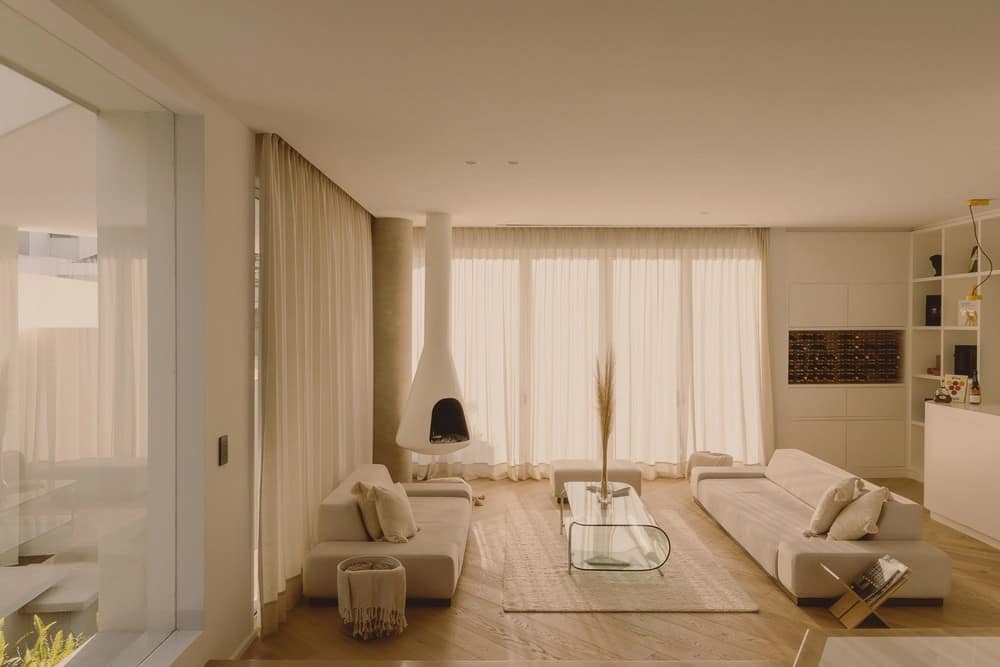
The color palette of the house consists of the white stucco, the green of the leaves and the warm tones in the selection of the furniture, where light wood is the main complement to the chromatic range. All the fixed furniture in the Sexta House was custom designed by All Arquitectura. For the rest, young designers were called in to work on the integral interior design proposal.
The main foyer carpet was designed by Amor Zapoteco, the living room armchairs are by Siete Studio, the bedroom carpets are by Déjate Querer, and the living room benches are by Domus. The metal sculptures are by UKMA. The selection of the art and the decoration in general was done through a joint work with Marilí del Pino and her firm.
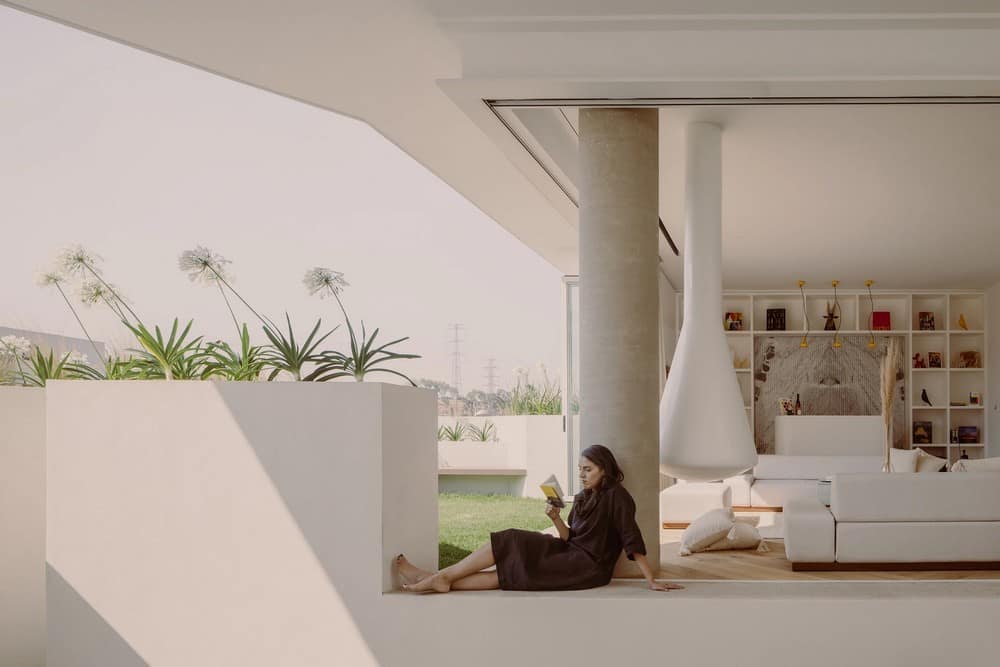
The entire house has a system to control audio, electronic systems and automated lighting, as well as heated floors in the bathrooms. Recirculators for the hydraulic installation were installed, so the house can maintain its autonomy for up to a week.
The project is understood as a whole; beyond the architectural spaces, it incorporates the functional to its form, becoming complete as a living organism that allows flexibility, developed around a reflection about the activities that comprise a house, one of the most complex typologies within the architectural design.
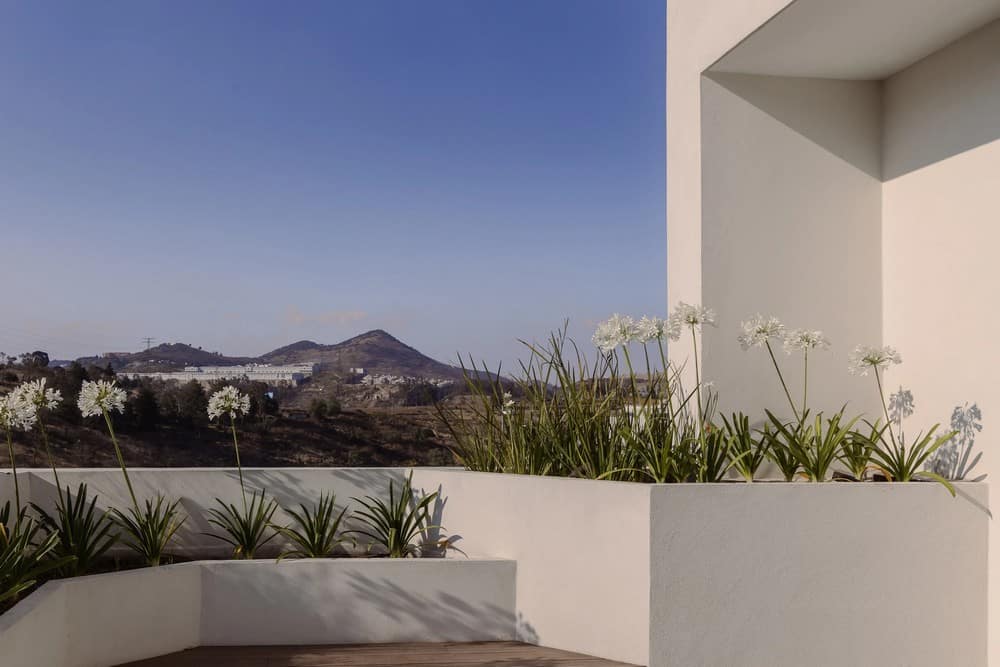
A play of white geometries welcomes the user when crossing the threshold to climb the staircase full of greenery already in a world separated from the bustle of the city and discover a room open to the front garden, extension of the interior. Finding visual highlights that add aesthetic value to the space at every step make the tour an amazing experience: the forceful spiral staircase, the central patio that helps to solve ventilation issues, the natural daylight that shades the walls at different times of the day.
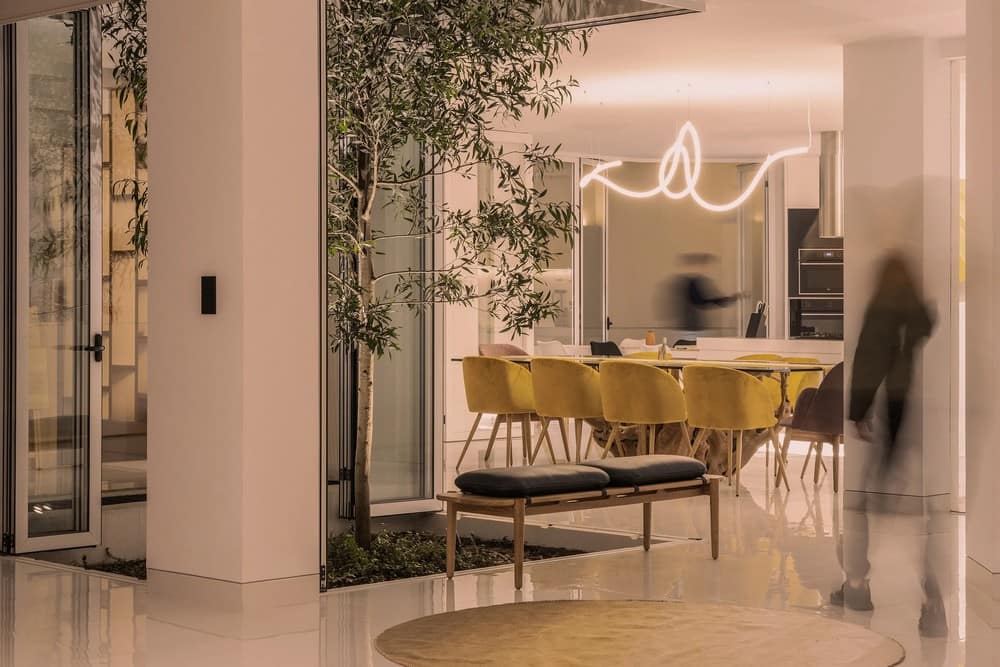
The challenge of arranging the spaces at 45º, which although it creates unconventional shapes in plan, generated clean and pure spaces, by virtue of offering architectural solutions that manage to make efficient and habitable spaces at the same time.
The intention was to make the architecture speak for itself; the white color used as material allows the interaction of the form with the light, the shadows, postulating the volume as the main character. The idea of a house that continues with the extension of the hill that characterizes the topography of Lomas Verdes.
